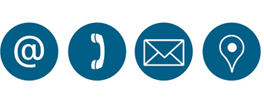Having bleeding kits in your business offers numerous benefits that enhance safety and preparedness. Here are some key advantages:
1. Immediate First Aid Response
Quick Access: Bleeding kits provide immediate supplies to address severe bleeding, which can be critical in emergencies.
2. Injury Mitigation
Reduced Severity: Prompt application of the right materials can help control bleeding, potentially saving lives and minimizing the severity of injuries.
3. Compliance with Regulations
Health and Safety Standards: Many workplaces are required to have first aid supplies. Bleeding kits help ensure compliance with occupational health regulations.
4. Employee Confidence and Morale
Safety Assurance: Knowing that effective first aid supplies are readily available can boost employee morale and confidence in workplace safety.
5. Training Opportunities
Skill Development: Having a bleeding kit can encourage training in first aid and emergency response, fostering a culture of safety among employees.
6. Risk Management
Liability Reduction: Preparedness can help mitigate risks and reduce potential liability in the event of an accident or injury.
7. Enhanced Reputation
Customer Trust: Businesses that prioritize safety are often viewed more favorably by clients and customers, improving overall reputation.
8. Emergency Preparedness
Comprehensive Safety Plan: Bleeding kits are an essential component of an overall emergency response plan, ensuring readiness for various incidents.
9. Community Responsibility
Support for Guests: Providing first aid resources shows responsibility not only for employees but also for guests and visitors.
10. Regular Maintenance
Ongoing Safety Culture: The need to regularly check and maintain the kits reinforces a culture of safety and preparedness within the organization.

Having a bleeding kit in your business offers several important benefits:
Immediate Response: Quick access to a bleeding kit allows for immediate first aid in case of an injury, potentially saving lives or preventing further harm.
Compliance and Safety: Many industries are required to have first aid supplies on hand. Having a bleeding kit helps ensure compliance with occupational health and safety regulations.
Employee Confidence: Knowing that there are supplies available for emergencies can boost employee morale and confidence in the workplace.
Reduced Severity of Injuries: Prompt treatment can help control bleeding and reduce the severity of injuries, leading to better outcomes and quicker recovery.
Training Opportunities: Having a bleeding kit can encourage first aid training among employees, creating a more safety-conscious workplace.
Risk Mitigation: It demonstrates a commitment to safety, potentially reducing the risk of liability in case of an accident.
Preparedness for Emergencies: It prepares the business for a variety of emergencies, from minor injuries to more serious incidents, fostering a culture of readiness.
Enhanced Reputation: Businesses that prioritize safety are often viewed more favorably by clients, customers, and potential employees.
Investing in a bleeding kit is a proactive step towards ensuring workplace safety and readiness for emergencies. Would you like tips on how to implement this in your business?

Installing bleeding kits in hotels is a proactive step toward ensuring guest and staff safety. Here are some key considerations and steps for implementation:
1. Assess Risk Areas
Identify high-risk areas such as kitchens, pools, gyms, and event spaces where injuries are more likely to occur.
2. Choose Appropriate Kits
Select bleeding kits that are suitable for your hotel's needs. Consider including items like tourniquets, sterile dressings, and gloves.
3. Strategic Placement
Position kits in easily accessible areas, clearly marked for visibility. Consider locations like:
Reception desks
Housekeeping areas
Employee break rooms
Near first aid stations
4. Training Staff
Provide training for staff on how to use the kits effectively. This can include:
Basic first aid training. We provide free CPR training






